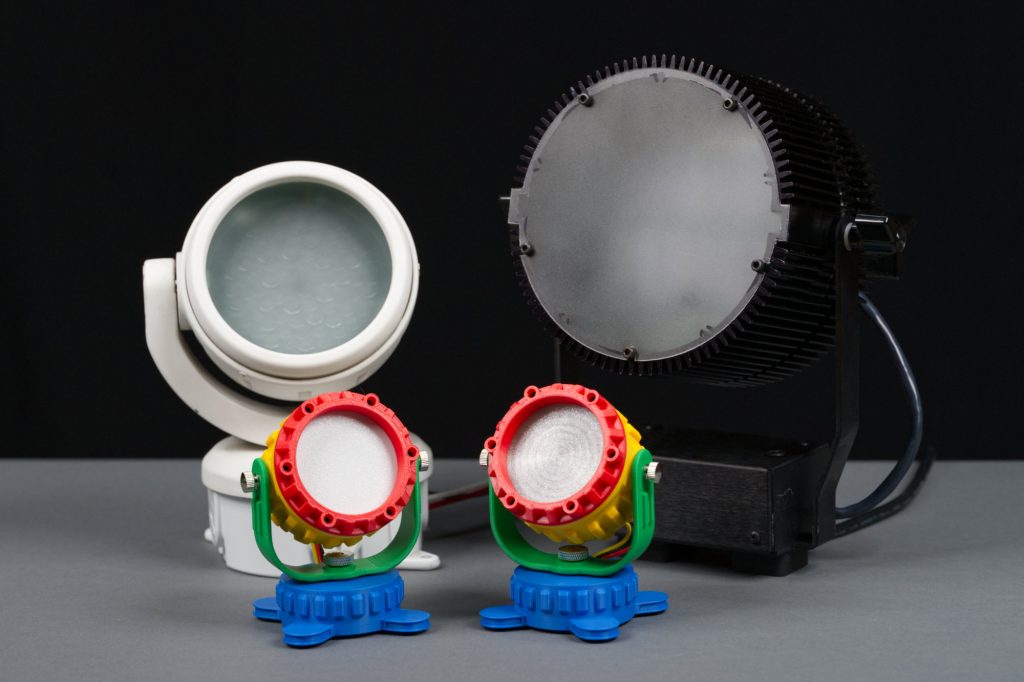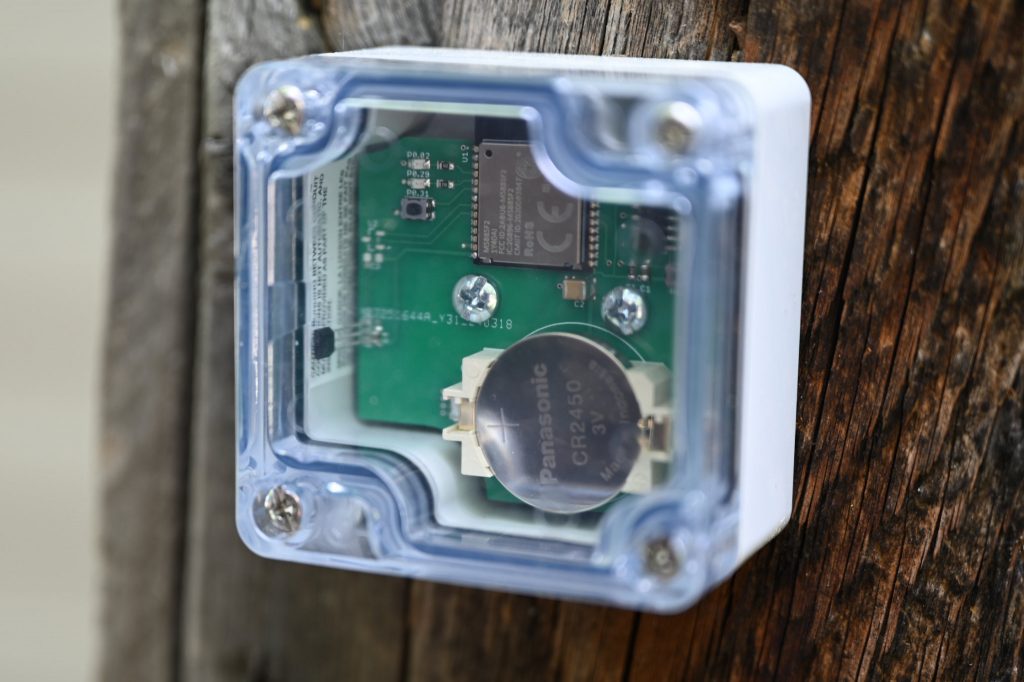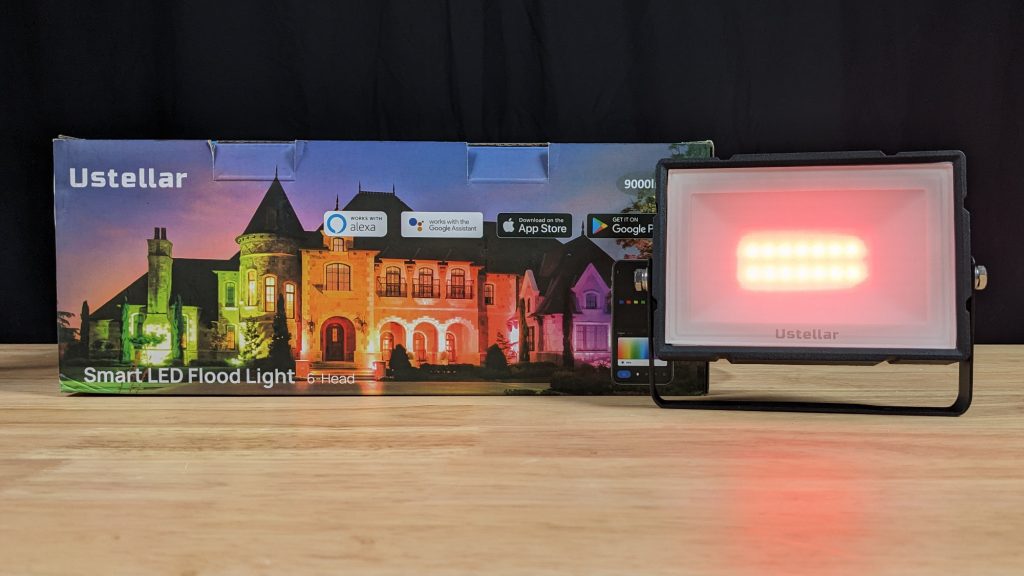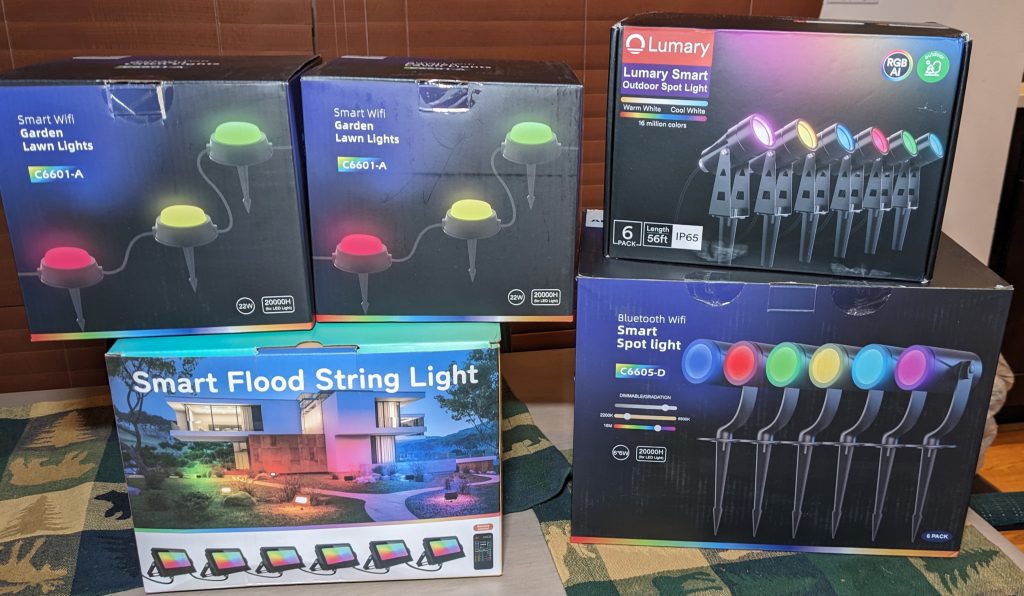
A white Color Kinetics ColorBlast 4, a black Color Kinetics C200, and two super-colorful My First Neopixel dance party lights.
Inspired by various colorful and chonky kids toys and some old Color Kinetics architectural fixtures, this colorful Neopixel spotlight packs an Adafruit Sparkle Motion Mini into its base and can be controlled over Wi-Fi using your choice of development environments. Read on to learn how to 3D print and build your own to bring a bit of colorful light into your work or living space!





